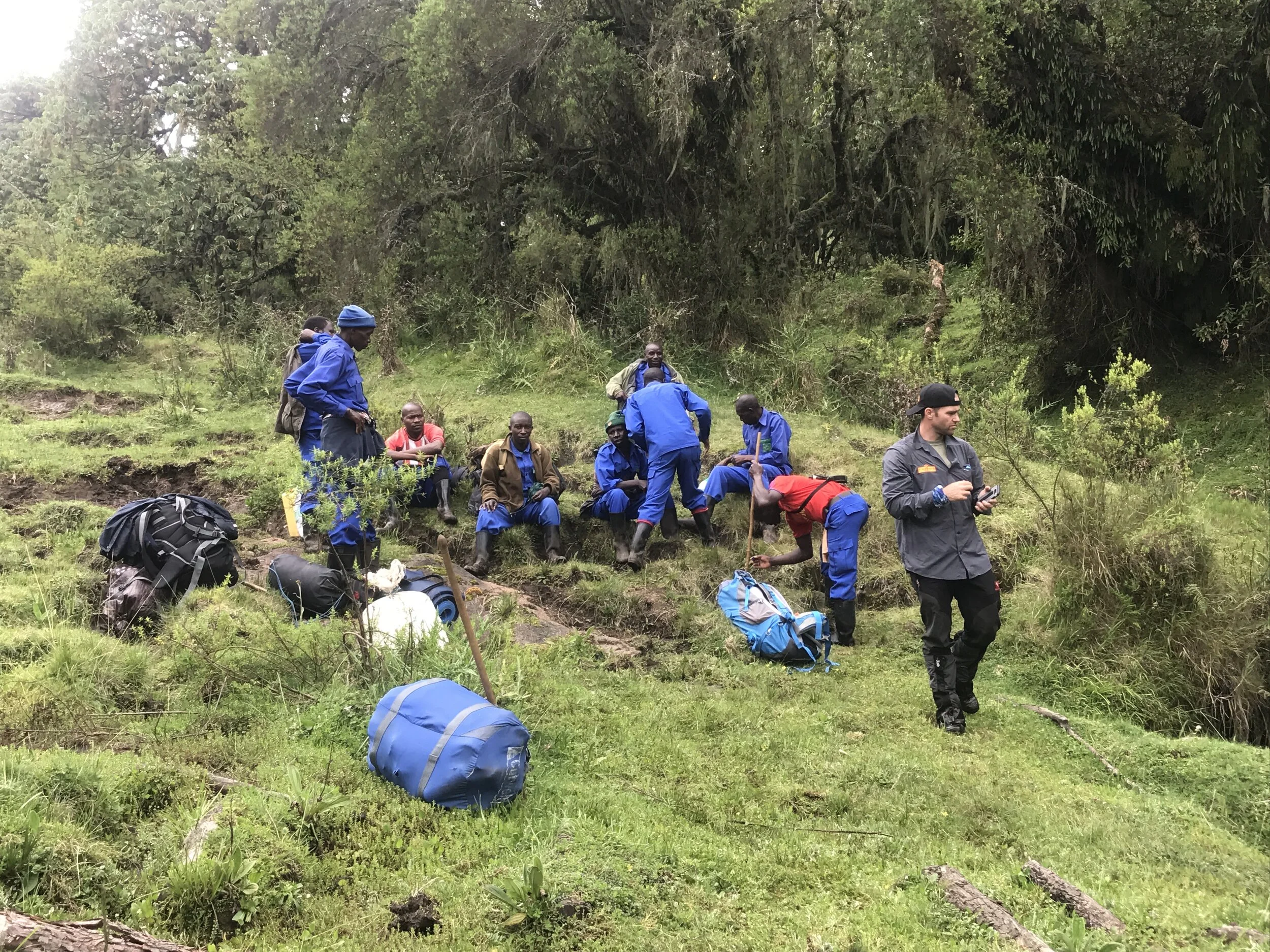Summit onm Mt. Karisimbi
Every dedicated mountain climber dreams of traveling to the African continent, where some of the world's most exciting mountain and volcano climbing excursions happen. That is especially true for the eastern African nation of Rwanda. Rwanda is home to some of the best hiking experiences globally, and one of these is Mount Karisimbi.
Quick Facts:
Height: 4,507 m
Altitude Gain: m
Duration: 2 days/1 night
Highlights
Dormant stratovolcano, located inside Volcanoes National Park
The highest mountain in Rwanda and 11th highest in Africa
Its name stems "amasimbi"" in the local Kinyarwanda dialect and means snow.
Mountain Karisimbi is the highest volcano among the eight most known volcanoes in the Virunga region and perhaps the 5th tallest in Africa, with about 4507m (14,787 ft) above sea level. Popularly known for the mountain gorillas. Mount Mikeno flanks it to the north, Bisoke to the east, and Nyiragongo to the west, on the Rift Valley's western side.
The mountain derives its name from the word Amasimbi" which is a local word in Kinyarwanda meaning "white shell," and this referred to the white-capped peak, which is frequently seen on top of this volcano and is mainly seen in the dry season of June, July, August, December, January and march at the summit of the volcanoes at the summit of the volcano.
Now that you know a bit about this mountain volcano, you can decide whether or not hiking it is for you. A significant perk of Mount Karisimbi is that most people can complete the hike, even if you are not an avid hiker, all year round. Of course, if you are in the worst shape of your life, this hike might be strenuous, but if you put your mind to it, chances are you'll make it to the top.
Photo by Gabriele Brown Taking a break
HIKE TO THE TOP OF MT. KARISIMBI
It takes two strenuous hiking days to get to the top of Mt Karisimbi. It is not a leisurely walk through the woods but rather a strenuous hike over wildly, muddy, slippery trails, especially on wet days.
On Day 1 of the trek, you'll meet your guide and fellow hikers early in the day, usually around 7 am. The first day involves hiking for 6 hours and then resting for the evening at an elevation of 3,700 meters. It is important not to complete the hike in one day since your body needs to acclimate to the elevation changes.
Photo by Gabriele Brown
Day 2 is a bit more strenuous. Even though it does not require a lot of time, the high altitude can make things more challenging. You'll get an early start in the morning and hike for a couple of hours before reaching the summit at 4,506 meters. Then you'll start making your way back down and reach your starting point at the end of Day 2.
It took my fellow hikers and me about 3 hours to reach the campsite set up 3,500 meters above sea level.
It is advisable to spend some time at the camp acclimating to the limited supply of oxygen before proceeding to the top. Rapid exposure to low-density air can cause high altitude sickness, draining energy like an illicit brew-induced hangover.
The night we spent on Mount Karisimbi was memorable. While camping, we shared stories, laughed, and froze our butts of That was as close as we could get to the oral tradition embraced by our ancestors. We didn't have Wi-Fi, but we found a better connection.
The Cause: Save the Black rhino
Courtesy of 7SummitAfrica
There are thought to be fewer than 5,000 black rhino in the wild globally. In the 1970s there were around 50 black rhinos in Rwanda’s Akagera National Park, but wide-scale poaching wiped them out. That was until May this year when an African Parks project relocated 18 black rhinos from South Africa to Akagera. With poachers still on the hunt for the rhino’s valuable horns (worth more than gold on the black market), the park is under pressure to protect its new crash of rhino. They are using helicopters for air surveillance, a rhino tracking team, and an anti-poaching dog unit on the ground. It’s an intensive operation.
How you can help:
Share this story. Follow the #7SummitsAfrica Challenge, presented by Great Migration Camps: www.7summitsafrica.com
The iconic Eastern black rhino has returned to Rwanda. The last rhino was seen in Rwanda in Akagera National Park in 2007 after decades of poaching. In a historic move, 18 Eastern black rhinos were reintroduced from South Africa to Akagera National Park in May 2017 bringing this endangered species back to the country for the first time in over a decade. This translocation was undertaken by African Parks in collaboration with the Akagera Management Company (AMC), the Rwanda Development Board (RDB), and with the generous support from the Howard G. Buffett Foundation. The People’s Postcode Lottery and the Dutch Government also provided additional support. It was confirmed in September that a calf had been born to one of the translocated females, increasing the population to 19. Help African Parks continue to protect the park and all the wildlife who call Akagera home.
Donate now: https://www.african-parks.org/donate
Courtesy of 7SummitAfrica






